Northern Lights Potential?
Take a look at the image loop from NOAA's Space Weather Prediction Center below... That brief explosion you see was an explosion from the sun! This "Coronal Mass Ejection" occurred on July 14th and was directed toward the Earth, which means that charged particles could hit Earth on/around July 16th & 17th, which could create a spectacular display of northern lights for northern latitudes over the coming days. NOAA's SWPC has issued a G2 (Moderate) Geomagnetic Storm Watch. Here's an excerpt from SpaceWeather.com regarding the upcoming northern lights potential: "NOAA forecasters say there is a 75% chance of geomagnetic storms on July 16th when a CMEis expected to hit Earth's magnetic field. Moderately strong G2-class storms on July 16th could intensify to strong G3-class storms on July 17th as Earth passes through the CME's magnetized wake. High latitude sky watchers should be alert for auroras in the nights ahead."

Northern Lights Forecast - Sunday Night!
Take a look at the image from NOAA's SWPC OVATION model, which suggests that there may be a pretty good chance of seeing northern lights across the northern tier of the nation Sunday night/early Monday morning. The Kp (Planetary K-Index) may peak around a 5 or 6, which means that the storm may be intense enough for the northern lights to be seen close to home! There may even be another chance of northern lights on Monday night/early Tuesday morning!
_________________________________________________________
"June 2017 was fourth-warmest on record"
"June 2017 was the fourth warmest June in 137 years of modern record-keeping, according to a monthly analysis of global temperatures by scientists at NASA's Goddard Institute for Space Studies (GISS) in New York. Last month was 0.69 degrees Celsius warmer than the mean June temperature from 1951-1980. It is surpassed by June 2016 (+0.79 °C) and June 2015 and 1998 (+0.78 °C) and only insignificantly warmer than June 2005 (+0.68 °C). Except for June 1998, the 10 warmest months of June occurred between 2005 and 2017."
 ____________________________________________________________
____________________________________________________________
"After 2000-era plateau, global methane levels hitting new highs"
"When it comes to global warming, carbon dioxide is the 800-pound gorilla: it’s the most abundant of the long-lived greenhouse gases that human activities generate. But ounce for ounce, methane (CH4) traps more heat, and it accounts for about 20% of the greenhouse gases produced by human activities. Strangely, though, global methane levels “flat lined” from 1999 to 2006. The plateau didn’t last, however, and in recent years, global methane levels have been hitting new highs. Figuring out what’s going on with methane is a high priority for carbon cycle experts at NOAA and other institutions around the world. Possibly the most important clue: air samples collected at different latitudes around the world show that the amount of methane carrying carbon-13—a rare, heavy isotope of carbon—has dropped significantly since 2007. That drop casts doubt on one of the first explanations experts considered for the post-2007 rise: an increase in methane emitted from fossil fuels, including "fugitive" methane gas escaping during oil and natural gas drilling. Instead, the chemical fingerprints point toward agricultural and wetland emissions from the tropics."
(Monthly methane concentrations (small circles) since 1983, with the running average as a solid line. NOAA Climate.gov graph, based on data from NOAA ESRL.)
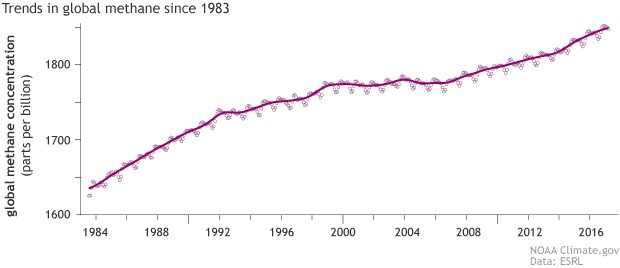
_________________________________________________________
North Shore Beauty
Thanks to my good friend Mary Dvorak for the picture below who spent a little time along Minnesota's North Shore earlier this week. After living in Duluth for 4 years and spending a lot of time hiking along the North Shore, it has a way of making you fall in love with it. Lake Superior is quite a spectacle... If you've never had a chance to experience it, make sure you do! You won't regret it!

Severe Threat Monday?
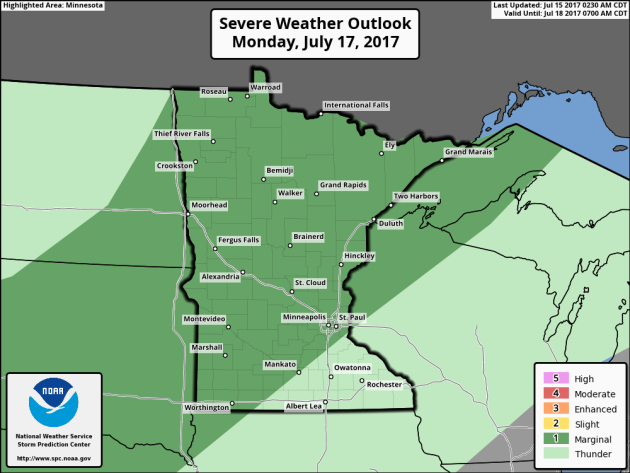
Simulated Radar
The simulated radar through midday Thursday shows a couple of rounds of heavier rain moving through the region. The first of which rumbles through Monday night with another potential round Tuesday night. There is the potential for a few strong to severe storms with this heavier rain as well. However, convective precipitation can be finicky, so there is a potential that some may not get much rain as these systems move through.
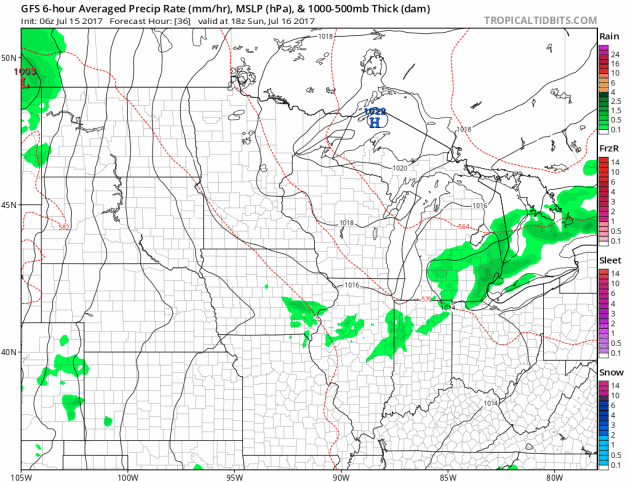
The rainfall forecast through the middle part of next week suggests some heavy rainfall potential moving in. Look at how widespread the 1"+ rainfall amounts are across the state! This would certainly be welcomed by many as the last few days have been pretty dry. You're lawns and gardens would be appreciative.
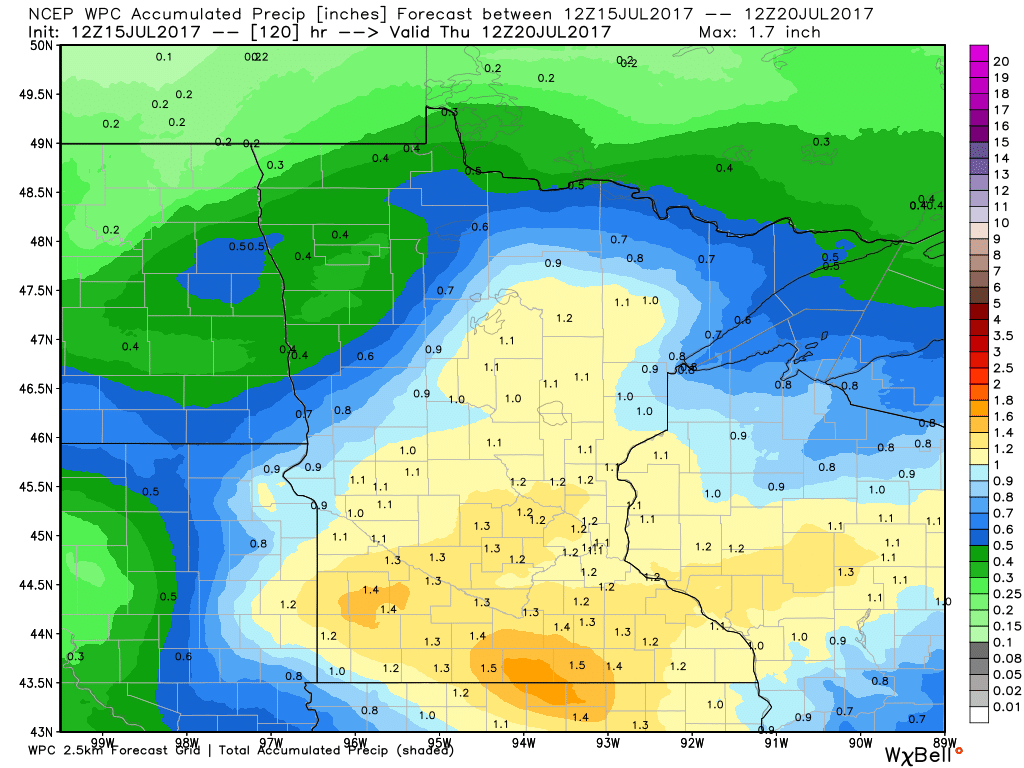
Not As Sweaty Sunday, But Muggy Again By Monday
Here's the expected dewpoint across the region on Sunday and Monday. Note that dewpoints will take a nice dip on Sunday with many spots falling into the 50s, which will feel much better than Saturday did. However, dewpoints spike again on Monday with readings back in the 60s and 70s! This increase in moisture will help fuel storms and heavy rain chances overnight Monday.
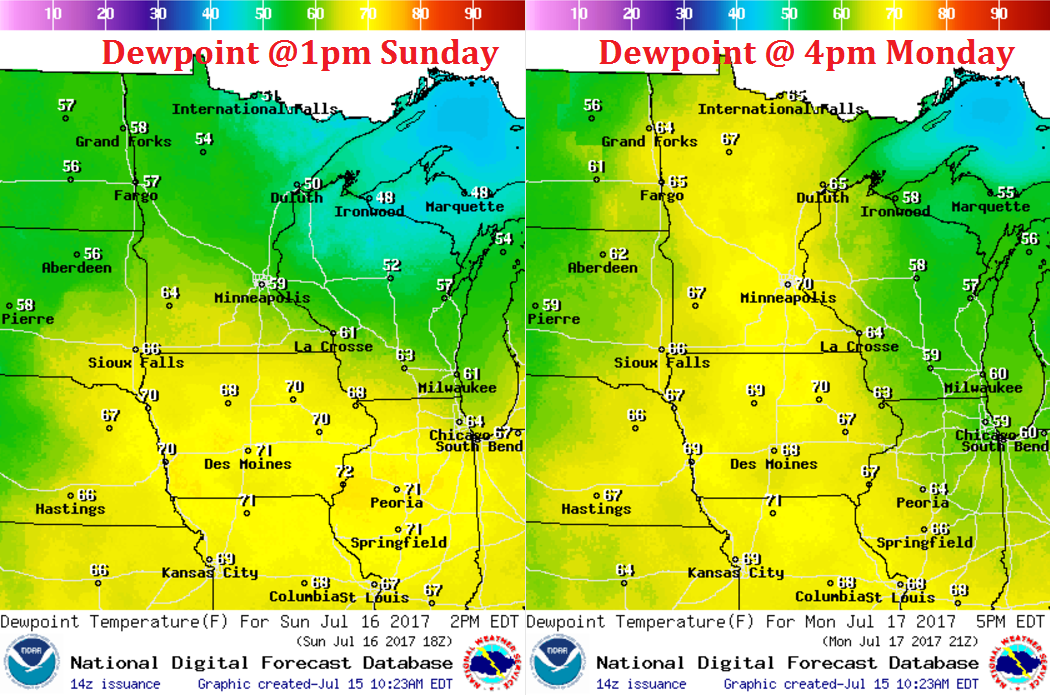
___________________________________________________________________________
FERNANDA in the Eastern Pacific
The National Hurricane Center continues to track FERNANDA, which as of early Saturday was a strong category 4 hurricane with sustained winds of 140mph. FERNANDA is the 6th named storm of the 2017 Eastern Pacific Hurricane Season and the 3rd hurricane of the season behind DORA & EUGENE, but is the first major hurricane of the season. The IR satellite loop below shows a well-defined "eye", indicating the intensity of this particular system.
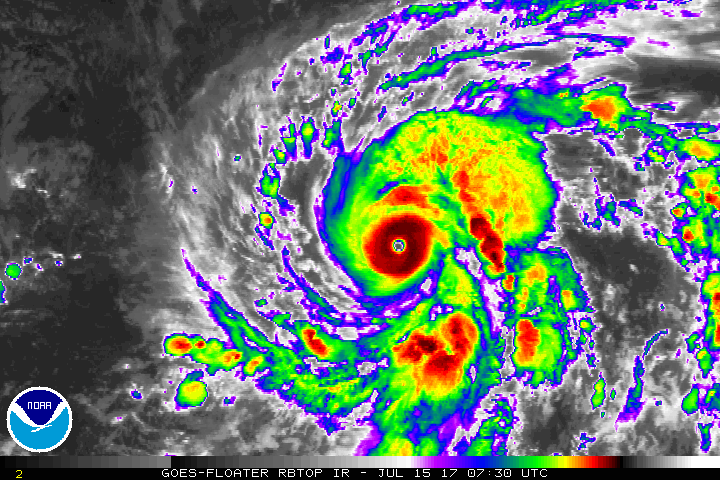
Here's the official track for FERNANDA, which has it staying a major hurricane through early next week. The good news is that the forecast track has it continuing to drift west away from any major landmass.
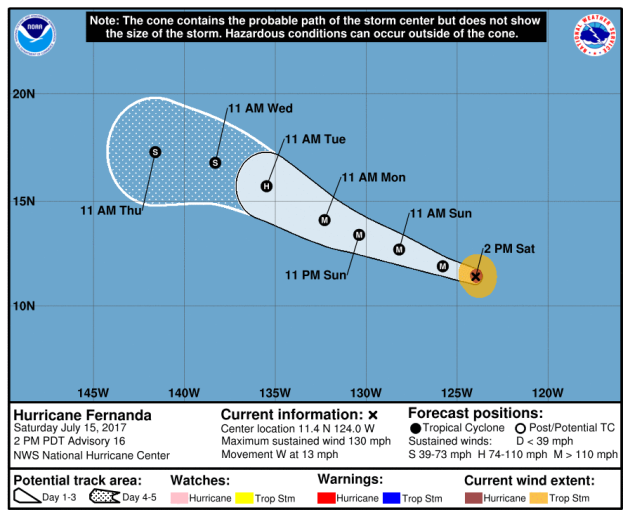
FERNANDA Strength
Here's an interesting image. This is the forecast from a number of different models regarding the potential strength of FERNANDA over time. Note that most models keep this storm as a category 4 hurricane through early next week before diminishing into a weaker hurricane or tropical storm by late next week.
.png)
Eastern Pacific Outlook: Next 5 Days
Weather conditions in the Eastern Pacific continue to remain active as NOAA's NHC is keeping an eye on two other waves of energy east of FERNANDA one has a medium chance of tropical development over the next 5 days, while the other has a low chance. Stay tuned...
.png)
Atlantic Outlook: Next 5 Days
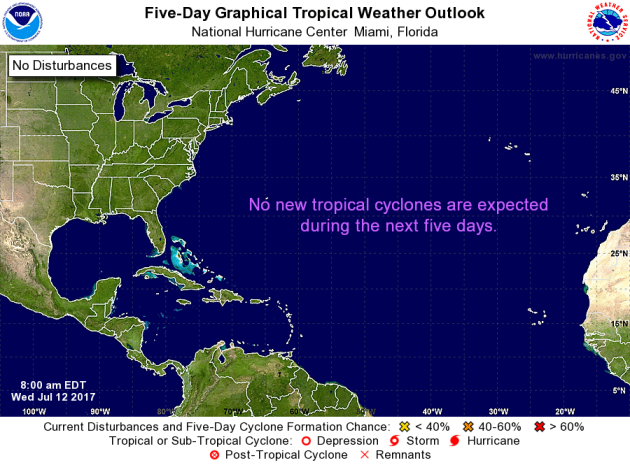
2017 Lightning Fatalities
According to NOAA's NWS, there have been 6 lightning fatalities so far this year. Note that 4 of those deaths have occurred in Florida, which is considered to be the lightning capital of the United States.
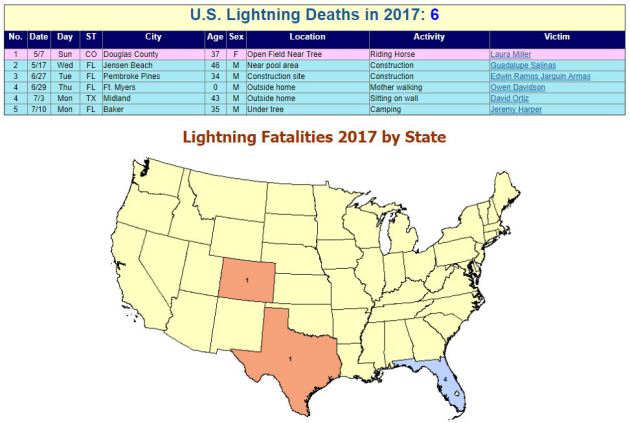
According to NOAA's NWS, lightning kills an average of 47 people each year in United States! Over the last 10 years, 310 people have died from lightning and what is interesting is that nearly 79% have been males!
.png) Lightning Safety: Myths & Facts
Did you know that lightning is nearly 5 times hotter than the surface of the sun? Here are a few interesting myths and facts from NOAA's NWS regarding lightning:
Lightning Safety: Myths & Facts
Did you know that lightning is nearly 5 times hotter than the surface of the sun? Here are a few interesting myths and facts from NOAA's NWS regarding lightning:
Myth: If you're caught outside during a thunderstorm, you should crouch down to reduce your risk of being struck.
Fact: Crouching doesn't make you any safer outdoors. Run to a substantial building or hard topped vehicle. If you are too far to run to one of these options, you have no good alternative. You are NOT safe anywhere outdoors. See our safety page for tips that may slightly reduce your risk.
Myth: Lightning never strikes the same place twice.
Fact: Lightning often strikes the same place repeatedly, especially if it's a tall, pointy, isolated object. The Empire State Building is hit an average of 23 times a year
Myth: If it’s not raining or there aren’t clouds overhead, you’re safe from lightning.
Fact: Lightning often strikes more than three miles from the center of the thunderstorm, far outside the rain or thunderstorm cloud. “Bolts from the blue” can strike 10-15 miles from the thunderstorm.
Myth: Rubber tires on a car protect you from lightning by insulating you from the ground.
Fact: Most cars are safe from lightning, but it is the metal roof and metal sides that protect you, NOT the rubber tires. Remember, convertibles, motorcycles, bicycles, open-shelled outdoor recreational vehicles and cars with fiberglass shells offer no protection from lightning. When lightning strikes a vehicle, it goes through the metal frame into the ground. Don't lean on doors during a thunderstorm.
Myth: A lightning victim is electrified. If you touch them, you’ll be electrocuted.
Fact: The human body does not store electricity. It is perfectly safe to touch a lightning victim to give them first aid. This is the most chilling of lightning Myths. Imagine if someone died because people were afraid to give CPR!
Myth: If outside in a thunderstorm, you should seek shelter under a tree to stay dry.
Fact: Being underneath a tree is the second leading cause of lightning casualties. Better to get wet than fried!
See more on lightning including safety tips HERE:
 ___________________________________________________________________________
___________________________________________________________________________
National Weather Hazards Ahead...
According to NOAA's NWS, there have been 6 lightning fatalities so far this year. Note that 4 of those deaths have occurred in Florida, which is considered to be the lightning capital of the United States.
Lightning Deaths Over the Last 10 Years
.png)
Myth: If you're caught outside during a thunderstorm, you should crouch down to reduce your risk of being struck.
Fact: Crouching doesn't make you any safer outdoors. Run to a substantial building or hard topped vehicle. If you are too far to run to one of these options, you have no good alternative. You are NOT safe anywhere outdoors. See our safety page for tips that may slightly reduce your risk.
Myth: Lightning never strikes the same place twice.
Fact: Lightning often strikes the same place repeatedly, especially if it's a tall, pointy, isolated object. The Empire State Building is hit an average of 23 times a year
Myth: If it’s not raining or there aren’t clouds overhead, you’re safe from lightning.
Fact: Lightning often strikes more than three miles from the center of the thunderstorm, far outside the rain or thunderstorm cloud. “Bolts from the blue” can strike 10-15 miles from the thunderstorm.
Myth: Rubber tires on a car protect you from lightning by insulating you from the ground.
Fact: Most cars are safe from lightning, but it is the metal roof and metal sides that protect you, NOT the rubber tires. Remember, convertibles, motorcycles, bicycles, open-shelled outdoor recreational vehicles and cars with fiberglass shells offer no protection from lightning. When lightning strikes a vehicle, it goes through the metal frame into the ground. Don't lean on doors during a thunderstorm.
Myth: A lightning victim is electrified. If you touch them, you’ll be electrocuted.
Fact: The human body does not store electricity. It is perfectly safe to touch a lightning victim to give them first aid. This is the most chilling of lightning Myths. Imagine if someone died because people were afraid to give CPR!
Myth: If outside in a thunderstorm, you should seek shelter under a tree to stay dry.
Fact: Being underneath a tree is the second leading cause of lightning casualties. Better to get wet than fried!
See more on lightning including safety tips HERE:
PRELIMINARY 2017 Tornado Map
It certainly has been a fairly active first half of 2017 with 1162 preliminary tornado reports through July 13th. Note that this is the most tornadoes through July 11th since 2011, when there were nearly 1,600 reports. The map below shows the distribution of the tornadoes so far this year.
.gif) PRELIMINARY 2017 Tornado Count
PRELIMINARY 2017 Tornado Count
According to NOAA's SPC, the PRELIMINARY 2017 tornado count is 1172 (through July 14). Note that is the most active year for tornadoes since 2011, when there were 1,631 tornadoes. Keep in mind there was a major tornado outbreak in the Gulf Coast region from April 25-28, 2011 that spawned nearly 500 tornadoes, some of which were deadly. That outbreak is known as the Super Outbreak of 2011 and has gone down in history as one of the biggest, costliest and one of the deadliest tornado outbreaks in history.
.png)
____________________________________________________________
.gif)
According to NOAA's SPC, the PRELIMINARY 2017 tornado count is 1172 (through July 14). Note that is the most active year for tornadoes since 2011, when there were 1,631 tornadoes. Keep in mind there was a major tornado outbreak in the Gulf Coast region from April 25-28, 2011 that spawned nearly 500 tornadoes, some of which were deadly. That outbreak is known as the Super Outbreak of 2011 and has gone down in history as one of the biggest, costliest and one of the deadliest tornado outbreaks in history.
.png)
____________________________________________________________
2.) Flooding possible across portions of the Southern Rockies, the Central Rockies, the Central Great Basin, and the Southwest.
3.) Flooding occurring or imminent across portions of the Middle Mississippi Valley, the Great Lakes, and the Ohio Valley.
4.) Flooding possible across portions of the Central Rockies, the Central Great Basin, and the Southwest.
5.) Excessive heat across portions of the Central Plains, the Northern Plains, the Tennessee Valley, the Mississippi Valley, the Great Lakes, and the Ohio Valley, Tue-Thu, Jul 18-Jul 20.
6.) Excessive heat across portions of the Southeast and the Mid-Atlantic, Thu-Fri, Jul 20-Jul 21.
7.) Much above normal temperatures across portions of the Central Plains, the Middle Mississippi Valley, the Upper Mississippi Valley, and the Northern Plains, Mon, Jul 17.
8.) Heavy rain across portions of mainland Alaska, Tue-Wed, Jul 18-Jul 19.
9.) Slight risk of much above normal temperatures for portions of the Central Great Basin, the Northern Plains, the Southern Plains, the Northern Rockies, California, the Northern Great Basin, and the Pacific Northwest, Wed-Fri, Jul 26-Jul 28.
10.) Slight risk of much above normal temperatures for portions of the Central Plains, the Northern Plains, the Middle Mississippi Valley, the Upper Mississippi Valley, the Great Lakes, and the Ohio Valley, Sat, Jul 22.
11.) Slight risk of much above normal temperatures for portions of the Southeast, Tue-Fri, Jul 25-Jul 28.
12.) Severe Drought across Hawaii, the Northern Plains, Southeastern California, and Southwestern Arizona.
.png)
_________________________________________________________
"Drought in High Plains the worst some farmers have ever seen"
"Drought in North Dakota is laying waste to fields of normally bountiful food and hay crops and searing pastures that typically would be home to multitudes of grazing cattle. Some longtime farmers and ranchers say it’s the worst conditions they’ve seen in decades — possibly their lifetimes — and simple survival has become their goal as a dry summer drags on without a raincloud in sight. “We’ve never been in this sort of boat, honestly,” said Dawn Martin, who raises beef cattle with her parents and husband in the southwestern part of the state, an area the U.S. Drought Monitor says is in “extreme” drought. “We’re just trying to make it through and work it out,” she said. “There are a lot of people in the same boat. I don’t know what the answer is.” The drought’s impact likely will be felt not just by farmers but also consumers, state Agriculture Commissioner Doug Goehring said. Agriculture in North Dakota is an $11 billion a year industry, and the state leads the nation in the production of nearly a dozen crops."
(In this July 13, 2017, photo, farmer John Weinand surveys a wheat field near Beulah, N.D., that should be twice as tall as it is. Drought in western North Dakota this summer is laying waste to crops _ some of which won’t even be worth harvesting. (Blake Nicholson/Associated Press))
 ___________________________________________________________________________
___________________________________________________________________________

EXTREME Drought in North Dakota
According to the US Drought Monitor, nearly 36% of the state is considered to be in an EXTREME Drought. This is up from nearly 29% last week. Also, nearly 94% of the state is considered to be either abnormally dry or in some type of drought.
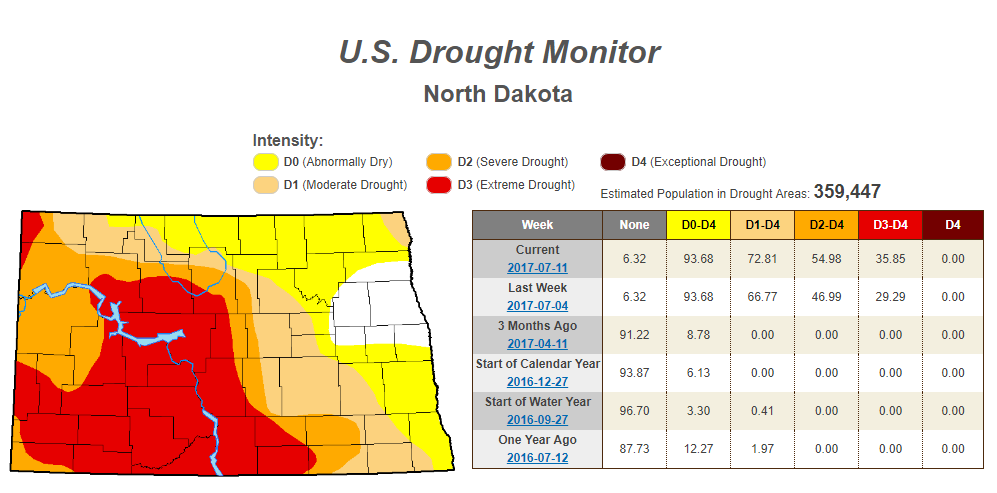
Rain Needed to End Drought
Extreme drought conditions are in place over parts of Montana and North and South Dakota due to several days/week of hot and dry weather. The image below suggests how much rain would be needed to end the drought, which suggests nearly 6" to 12" or more!
US Drought Monitor
According to the US Drought Monitor, drought conditions from July 4h to July 11th worsened slightly across the nation. Note that EXTREME drought conditions (located across parts of Montana and parts of North and South Dakota increased from 1.43% last week to 2.19% this week.

_________________________________________________________________________
National Weather Outlook
Here's the weather outlook through the middle part of next week, which areas of showers and storms in the Gulf Coast and Mid-Atlantic Region this weekend with locally heavy rainfall and a few strong storms. Weather conditions also look a little unsettled across the Upper Midwest as we head into next week. There could be areas of severe storms and heavy rainfall developing on the outer periphery of the hot & sticky weather in the Central US. Meanwhile, monsoonal storms with locally heavy rains will continue across the Southwest.
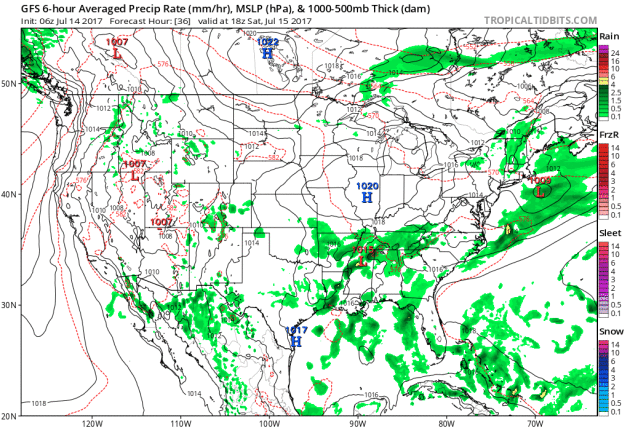
Severe Threats Sunday & Monday
Here are the severe weather concerns for Sunday and Monday, which don't appear to be all that impressive, however, there could be a few isolated strong to severe storms across parts of the nation. Keep an eye out for a few strong storms in the dark green areas, which according to NOAA's SPC is considered to be a MARGINAL risk of severe storms.
Excessive Rainfall Potential Saturday & Sunday
According to NOAA's WPC, there is a risk of excessive rain on Sunday across the parts of the Southwest, Central Plains and along the Gulf Coast. Note that the best potential for heavy rain will be found from southeastern Georgia to the eastern portions of North & South Carolina. On Sunday, the threat for heavy rainfall continues in the Southwest, but then shifts into the Upper Midwest and into the Northeast.
.gif)
.gif)
With excessive rainfall potential in place over parts of the Ohio Valley, Northeast and along the Gulf Coast into the Mid-Atlanti, some spots could see more than 1" to 3"+ of rain over the next 5 days. This heavy rain threat could lead to isolated areas of flooding!
Monsoonal Storms
WOW! Here's a great picture from @Chris_Manno who is a pilot and who also has an apparent knack for snapping great pictures. This view is from above a monsoon storm north of Tuscon, AZ on Friday. Great picture Chris!

Monsoon Storms Continue
Here's the simulated radar from Sunday to Thursday, which shows the potential of daily monsoon storms continuing across the region. Note that some of the storms could be a little on the strong side with gusty winds, dust storms and locally heavy rain, which could lead to localized flooding. The 5 day rainfall forecast below suggests that some areas could see up to 1" of rain or more through the end of next week!
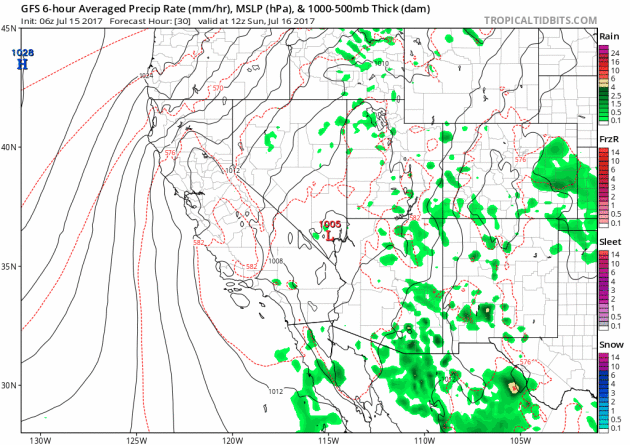
Heat Advisories Through Sunday
The National Weather Service Continues Heat Advisories across parts of the Western US throught the weekend where temperatures could warm into the upper 90s and low 100s. Dangerousl levels of heat combined with dry weather will lead to elevated fire danger concerns.
High Temperatures on Sunday
The heat will still be in place on Sunday with highs in the mid/upper 90s and low 100s pretty widespread across the region. Note that the warmest temperatures will be found in the Desert Southwest, where readings could warm to around 110F+!
Whittier Fire - Camp Whittier near Lake Cachuma, Hwy 154 - California
The Whittier Fire at Camp Whittier near Lake Cachuma in California is a big one! Unfortunately, this fire has alread consumed 20 structures; 8 homes and 12 outbuildings. The fire started on Saturday, July 8th and has ballooned to 17,364 acres since then. With 1,612 people working on the fire, it is only 35% contained at this point . Hot, dry and strong "Sundowner Winds" will continue to keep this fire threat high.

Rooster Comb Fire - Battle Mountain, Nevada
According to Inciweb, one of the largest fires currently burning in the Lower 48 is the Rooster Comb Fire located near Battle Mountain, NV. This particular fire has consumed a whopping 218,000 acres and is 80% contained. This particular fire started on Sunday, July 9th and quickly spread as hot, dry and windy weather created extreme fire behavior. Thunderstorms and erratic winds are still posing a concern for the fire. The good news is that there are currently 550 people working on the fire and the estimated containment date is projected for Monday, July 17th.
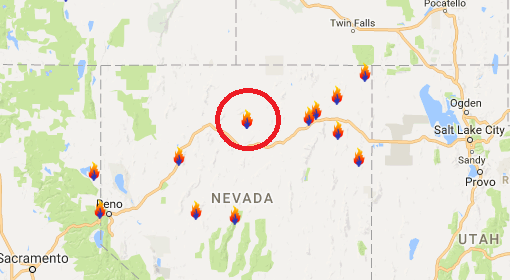
Ongoing Large Wildfires
Here's a look at the current wildfire map across the country. Recent hot and dry weather has helped to spark several wildfires across the Western US, while a few have also been popping up in the Eastern US.
National Smoke Analysis
Here's the projected wildfire smoke concentration for midday Sunday, which suggests that smoke from wildfires burning in Canada could start to move into the extreme northern portions of the country, especially around the Upper Midwest/Great Lakes region. If you are in these areas, air quality could be a little poor, but these areas may also be enjoying very interesting looking sunrises/sunsets, which tend to look hazy or reddish-orange.
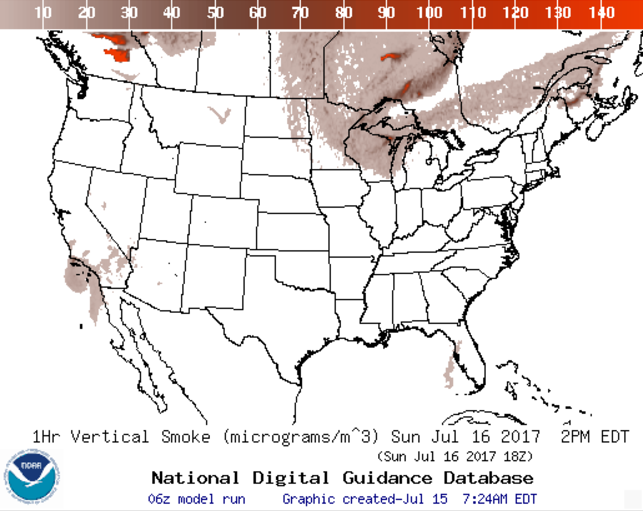
Fire Weather Concerns Sunday
According to NOAA's SPC, the fire threat for Sunday remains at ELEVATED and CRITICAL levels across parts of the Northwest and High Plains. Hot, dry and windy conditions could help to fuel erratic wildfire behavior in these areas for any fires currently burning. If any fires get going, the could spread quickly to uncontrolable levels.
________________________________________________________________________
Nearly Perfect Sunday. Heavy Rain Chances Ahead
By Todd Nelson, filling in for DouglasMy two young boys just recently finished their first golf camp and they sure had fun. I might be a little selfish, but my hope is that they will still be interested in playing when they get older. Something sounds right about being able to play a few rounds with them when I am retired.
If you're a golfer, you know how frustrating the game can be. My 8-year old just learned what a "worm burner" is. HA! Minnesota weather can be a little frustrating at times too. The one thing to always remember is that just like in golf, you'll always have another good shot; another glorious day. Sunday is one of those days!
Bright sun, cooler temps and much less humidity will make Sunday one of the nicest Sundays this summer, no question. We make a quick turnaround to sweaty weather again Monday as temps spike to near 90 degrees with dewpoints around 70!
The increase in heat and humidity this week will bring several chances of stormy weather, especially overnight. These nocturnal storms will also bring the potential of heavy rains.
FORE!
______________________________________________________
By Todd Nelson, filling in for DouglasMy two young boys just recently finished their first golf camp and they sure had fun. I might be a little selfish, but my hope is that they will still be interested in playing when they get older. Something sounds right about being able to play a few rounds with them when I am retired.
If you're a golfer, you know how frustrating the game can be. My 8-year old just learned what a "worm burner" is. HA! Minnesota weather can be a little frustrating at times too. The one thing to always remember is that just like in golf, you'll always have another good shot; another glorious day. Sunday is one of those days!
Bright sun, cooler temps and much less humidity will make Sunday one of the nicest Sundays this summer, no question. We make a quick turnaround to sweaty weather again Monday as temps spike to near 90 degrees with dewpoints around 70!
The increase in heat and humidity this week will bring several chances of stormy weather, especially overnight. These nocturnal storms will also bring the potential of heavy rains.
FORE!
______________________________________________________
Extended Forecast
SUNDAY: Less humid. Almost perfect. Winds: ESE 5. High: 82.
SUNDAY NIGHT: Mostly clear & quiet. Chance for northern lights? Winds: E 5. Low: 62.
MONDAY: Hot & sticky again. Storms overnight. Winds: S 5-10. High: 87.
TUESDAY: Scattered storms. Heavy rain potential. Winds: S 5. Wake-up: 73. High: 87.
WEDNESDAY: Still unsettled. Chance for t-storms. Winds: ESE 5. Wake-up: 70, High: 88.
THURSDAY: Stray afternoon rumble? Winds: NNE 5. Wake-up: 70. High: 86.
FRIDAY: Sunny. Storms possible at night. Winds: ESE 5. Wake-up: 67. High: 85.
SATURDAY: Lingering thunder chance. Winds: E 5-10. Wake-up: 67. High: 86.
_______________________________________________________
_______________________________________________________
This Day in Weather History
July 16th
July 16th
2006: A heat burst occurs over west central and central Minnesota. The temperature at Canby jumped from 91 degrees to 100 degrees in 40 minutes from 10:35pm to 11:15pm. At the same time the dew point temperature dropped from 63 to 32 degrees. Heat bursts are caused by dying thunderstorms with very warm air aloft.
1963: A downpour falls at St. Charles, where half a foot of rain accumulates in one day.
________________________________________________________
________________________________________________________
Average High/Low for Minneapolis
July 16th
July 16th
Average High: 84F (Record: 102F set in 1926)
Average Low: 64F (Record: 51F set in 1958)
Average Low: 64F (Record: 51F set in 1958)
Record Rainfall: 1.28" set in 1908
_________________________________________________________
_________________________________________________________
Sunrise/Sunset Times for Minneapolis
July 16th
July 16th
Sunrise: 5:42am
Sunset: 8:55pm
Sunset: 8:55pm
Hours of Daylight: 15hours & 14mins
Daylight LOST since yesterday: ~1 minute and 41 seconds
Daylight LOST since summer solstice (June 20th): ~23 minutes
__________________________________________________________
Daylight LOST since summer solstice (June 20th): ~23 minutes
__________________________________________________________
Moon Phase for July 16th at Midnight
0.5 Days After Last Quarter
0.5 Days After Last Quarter
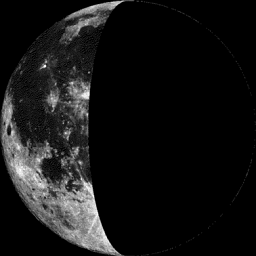
_________________________
Weather Outlook For Sunday
Sunday will be a very nice day across Minnesota and Wisconsin with temperatures dropping quite a bit from what we had on Saturday. Not only will temperatures be more comfortable, but dewpoints will be lower and skies will remain mostly clear! Enjoy!
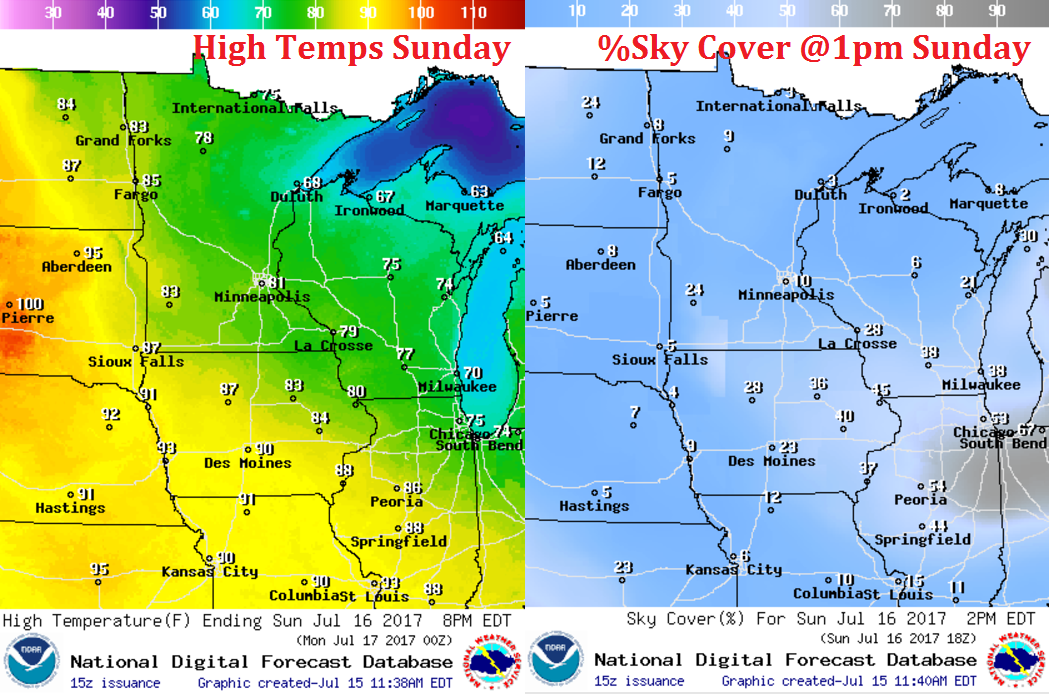
UV Index for Sunday - VERY HIGH
The UV Index will be considered VERY HIGH across much of the state of Minnesota on Sunday, which means that it will only 15 to 20 minutes or less to burn unprotected skin. With that said, if you are planning on spending any extended length of time outside, make sure you wear appropriate attire and lather on the sun block!
__________________________________________________________________________
Weather Outlook For Monday
Sunday will be a rather nice day across the region as we will be post-front. Temperatures and humidity values will be a little lower than they are expected to be on Saturday. Enjoy!
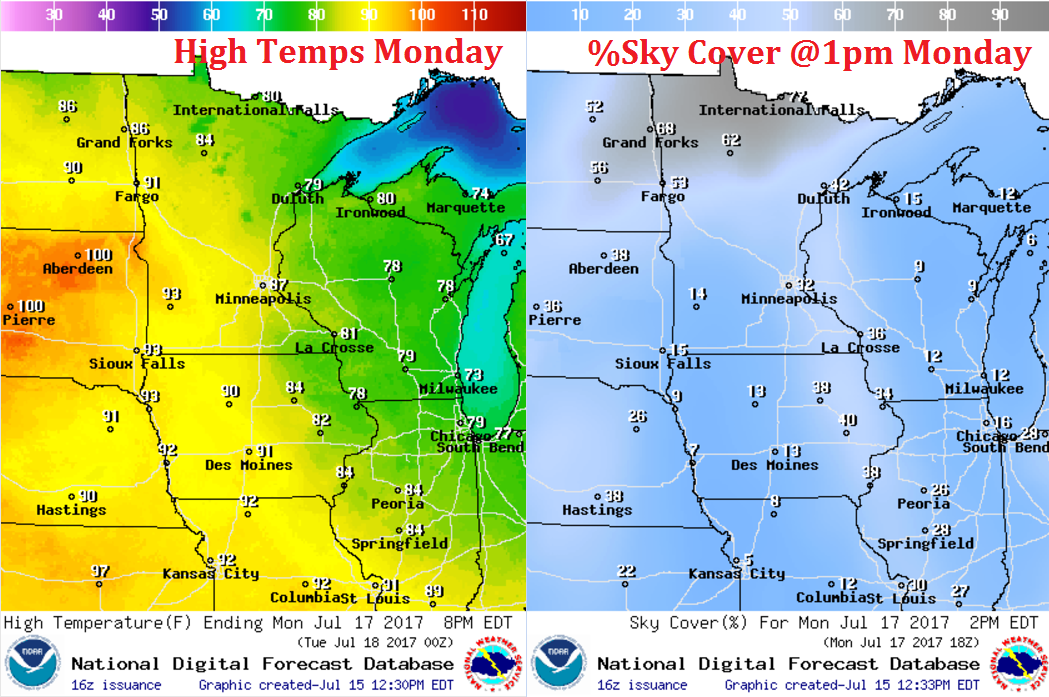
UV Index for Sunday - VERY HIGH
The UV Index for Sunday is expected to be VERY HIGH once again, which means that your skin could burn in 15 to 20 minutes or less!
_____________________________________________________________
Minneapolis Temperature Outlook
Here's the temperature outlook through July 30th, which shows temperatures taking a little bit of a dip on Sunday compared to where we were on Saturday, but note that we get another heat spike as we head into next week. The extended forecast as we head into the rest of the month shows temperatures consistently at or above average in the mid/upper 80s.
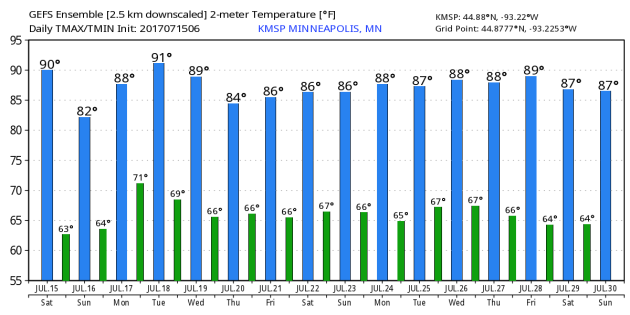
8 to 14 Day Temperature Outlook
According to NOAA's CPC, the extended temperature outlook from July 24rd to July 28th suggests warmer than average temperatures continuing across much of the Upper Midwest as we head into the end of the month. Yes, it could be a pretty warm and sticky rest of the month.
___________________________________________________________
Extended Temperature Outlook
According to NOAA's CPC, the extended temperature outlook through July 28th shows much of the nation will be dealing with above normal temperatures into the second half of the month. The only cooler than average spots maybe located across parts of the Southwestern US due to ongoing monsoonal moisture there, but there may also be some cooler than average temps in the Northern New England States.
Extended Temperature Outlook
Here's the extended 850mb temperature anomaly loop through the end of next weekend. This describse how warm or cold (from average) mid/low level temperatures will be over time. Note that the warmer oranges and reds across much of the nation, which means that warmer surfaces temperatures will likely be found in those areas. Interestingly, it appears that these warmer than average temperatures look to dominate much of the nation through much of that time period.
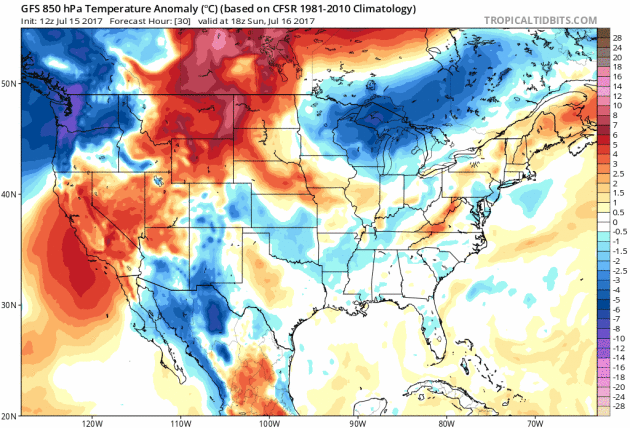
Weather Outlook This Week
The weather outlook over the next couple of days shows stormy weather continuing across parts of the Southern and Eastern US. Some of the storms in these areas could be strong to severe with locally heavy rains. There could also be a few strong storms in the Southwest with locally heavy rain.
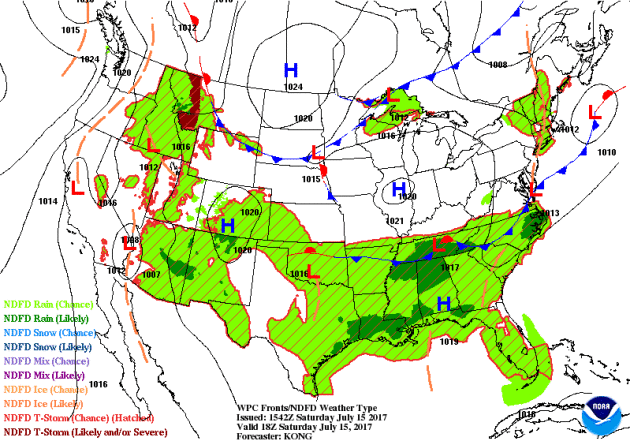
5 Day Precipitation Outlook
According to NOAA's WPC, the next several days could produce areas of locally heavy rainfall across parts of the Southern U.S. and especially across the Eastern Carolinas, much of which would fall on Sunday. Areas of heavy rain will also be found in the Southwest due to monsoon storms. Then, an unsettled early week time frame could produce areas of heavy rain across the Upper Midwest.
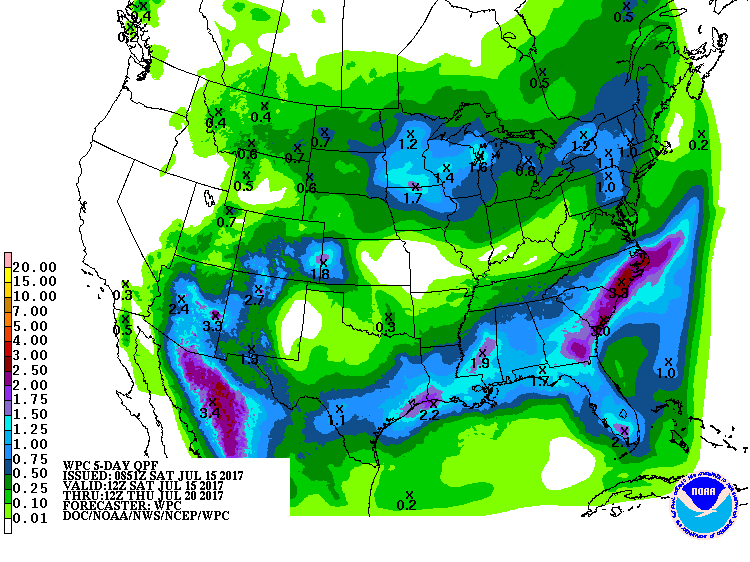 ___________________________________________________________________
___________________________________________________________________
"Polar bears hurt by climate change are more likely to turn to a new food source — humans"
"More than any other animal, polar bears have become the poster cub for climate change. Al Gore used a cartoon of an exhausted, endlessly swimming polar bear to illustrate the impact humans were having on the sea ice where the bears once hunted. Coca-Cola raised $2 million for arctic polar bears and decorated the website for the habitat preservation campaign with an adorable picture of a cub. And agency after agency has warned that climate change could make polar bears extinct by 2050. But a group of scientists has posited another potential impact of global warming on polar bears, and it’s not nearly so adorable. It involves you being lunch."
(Polar bears hunt marine mammals from the sea ice, but what will happen when the ice is gone? (Mario Hoppmann/European Geosciences Union via Agence France-Presse))
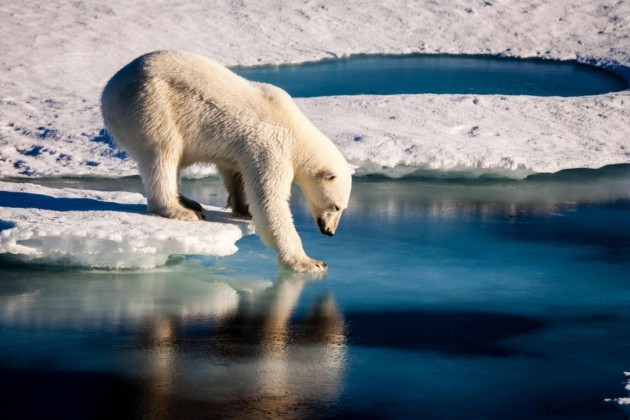
"Climate change to have devastating effect in Asia: Study"
"Climate change would bring devastating consequences to countries in the Pacific and Asia, a new report has warned and said Southern India may witness a decline in rice yields by five per cent in 2030s. Unabated climate change could severely affect the future growth of these countries, reverse current development gains, and degrade quality of life, the report by the Asian Development Bank (ADB) and the Potsdam Institute for Climate Impact Research (PIK) claimed. According to the report, Asia has the highest number of people exposed to flooding from possible storm surge events, particularly in the People's Republic of China (PRC), India, Bangladesh, and Indonesia. It said meanwhile, 130 million people in low-elevation coastal zones in Bangladesh, India, and Pakistan, are at risk of being displaced by the end of the century in worst-case scenarios. "While rice yields could potentially increase in the northern states of India, rice yields may decline by 5 per cent in the 2030s, 14.5 per cent in the 2050s and 17 per cent in the 2080s in the southern states," it said."
(Image Credit: NOAA)
"Climate Change Could Make The Earth "Practically Ungovernable""
Former NASA climate chief James Hansen believes climate change's most dangerous effect will be a continuous rise in sea levels and not necessarily the increase in temperatures. Because so many people live in coastal cities, the mass migrations inland that will follow this rise could leave the world in ungovernable chaos. Simply fixating on the potential negative effects of climate change instead of focusing on efforts to combat it will not help our planet. However, climate change predictions are the reason these efforts matter, and they provide valuable insights as to how we should take action. According to former NASA climate research head James Hansen, the effect of climate change we should be most focussed on isn't the warming of the atmosphere. It's the rising sea levels."
See more from ScienceAlert HERE:
(Image Credit: Holgi/Pixabay via ScienceAlert)

____________________________________________________________________"What is the relationship between migration and climate-change risk?"
"According to the United Nations Population Fund, there are some 244 million international migrants in the world today — with more of them leaving their homes as refugees than at any time since World War II. Now, thanks to a new study, we have a better picture of how migration affects people’s exposure to climate change risk, a relationship that merits closer attention by policy-makers worldwide. Published in the Journal of Sustainability, “Climate Vulnerability and Human Migration in Global Perspective” is the first global-scale analysis of the association between migration and people’s vulnerability to the impacts of climate change. Climate vulnerability increases with people’s inability to cope with extreme weather events, which can affect infrastructure and the availability of ecosystem services, creating socioeconomic and geopolitical pressures. These factors, in turn, can influence people’s mobility."
See more from the University of Minnesota HERE:
(Image Credit: UofM)
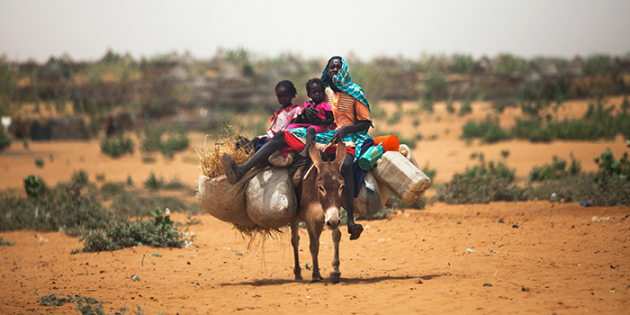
________________________________________________________________"Climate change is going to make air travel even more nightmarish, study says"
See more from ScienceAlert HERE:
(Image Credit: Holgi/Pixabay via ScienceAlert)

____________________________________________________________________"What is the relationship between migration and climate-change risk?"
"According to the United Nations Population Fund, there are some 244 million international migrants in the world today — with more of them leaving their homes as refugees than at any time since World War II. Now, thanks to a new study, we have a better picture of how migration affects people’s exposure to climate change risk, a relationship that merits closer attention by policy-makers worldwide. Published in the Journal of Sustainability, “Climate Vulnerability and Human Migration in Global Perspective” is the first global-scale analysis of the association between migration and people’s vulnerability to the impacts of climate change. Climate vulnerability increases with people’s inability to cope with extreme weather events, which can affect infrastructure and the availability of ecosystem services, creating socioeconomic and geopolitical pressures. These factors, in turn, can influence people’s mobility."
See more from the University of Minnesota HERE:
(Image Credit: UofM)

________________________________________________________________"Climate change is going to make air travel even more nightmarish, study says"
"Last month, Phoenix was hit by a sweltering heatwave, with temperatures reaching 120 degrees Fahrenheit. It was so hot, American Airlines was forced to cancel 50 flightsscheduled to depart Sky Harbor International Airport. The news of the cancellations spread far and wide, as people were interested in learning more about the physics of air travel and how extreme heat affects flying. And now a new study suggests that what happened in Phoenix may be just the tip of the rapidly melting iceberg. Extreme heat is a byproduct of climate change. Experts agree that as the Earth’s temperature rises, these heatwaves will come more frequently, last longer, and be felt more intensely. And this will have an indelible effect on how we use airplanes for travel and commerce. A team of researchers at Columbia University set out to chart exactly how rising temperatures will affect the takeoff and landing performance of aircraft; their findings were published today in the journal Climatic Change."
(Credit: TheVerge.com)
"Trillion-Ton, Delaware-Size Iceberg Breaks Off Antarctica's Larsen C Ice Shelf"
"Like a driver facing a crack in a windshield, scientists have been watching a rift growing across a giant ice shelf in Western Antarctica for years, waiting for the day that it would break. This week, a trillion-ton expanse of ice nearly the size of Delaware broke off into the ocean. "This event will fundamentally change the landscape of the Antarctic Peninsula," scientists involved in Project Midas, which studies the impact of melting on ice shelf dynamics and stability, wrote on its website. The group announced early this morning that satellite data had confirmed the break. The break that sliced off about 10 percent of the Larsen C Ice Shelf was driven by natural processes, and it isn't going to raise sea level on its own because the ice shelf was already floating on the water. But it can't be viewed in isolation."
(“Although this is a natural event, and we’re not aware of any link to human-induced climate change, this puts the ice shelf in a very vulnerable position,” said glaciologist Martin O’Leary. Credit: NASA/John Sonntag)

"Even if every country on the planet cuts emissions, the climate would still be screwed"
"A planet devastated by climate change may seem like a distant future. But Earth is already experiencing the effects of rising global temperatures today. Worldwide, the mean rate of sea level rise increased 50% in the last two decades. In 2017, temperatures have already reached their highest levels in history in some areas, from California to Vietnam. The past three years were the hottest on record. These changes are caused by increasing levels of carbon dioxide and methane in the Earth's atmosphere, a product of human activity. And as New York Magazine's David Wallace-Wells recently noted, no single emissions reduction program we have today is enough to prevent climate disaster — not even the Paris agreement. Even if every signatory country in the accord meets its current pledge for reducing emissions — including the US, though Trump has pledged to pull the country out of the agreement — the world is still projected to warm over 2 degrees Celsius by 2050. The Paris agreement points out this reality in a section titled, "Notes with concern."
(Photos of Alaska's Muir Glacier in August 1941 (L) and August 2004 (R). Credit: NASA)
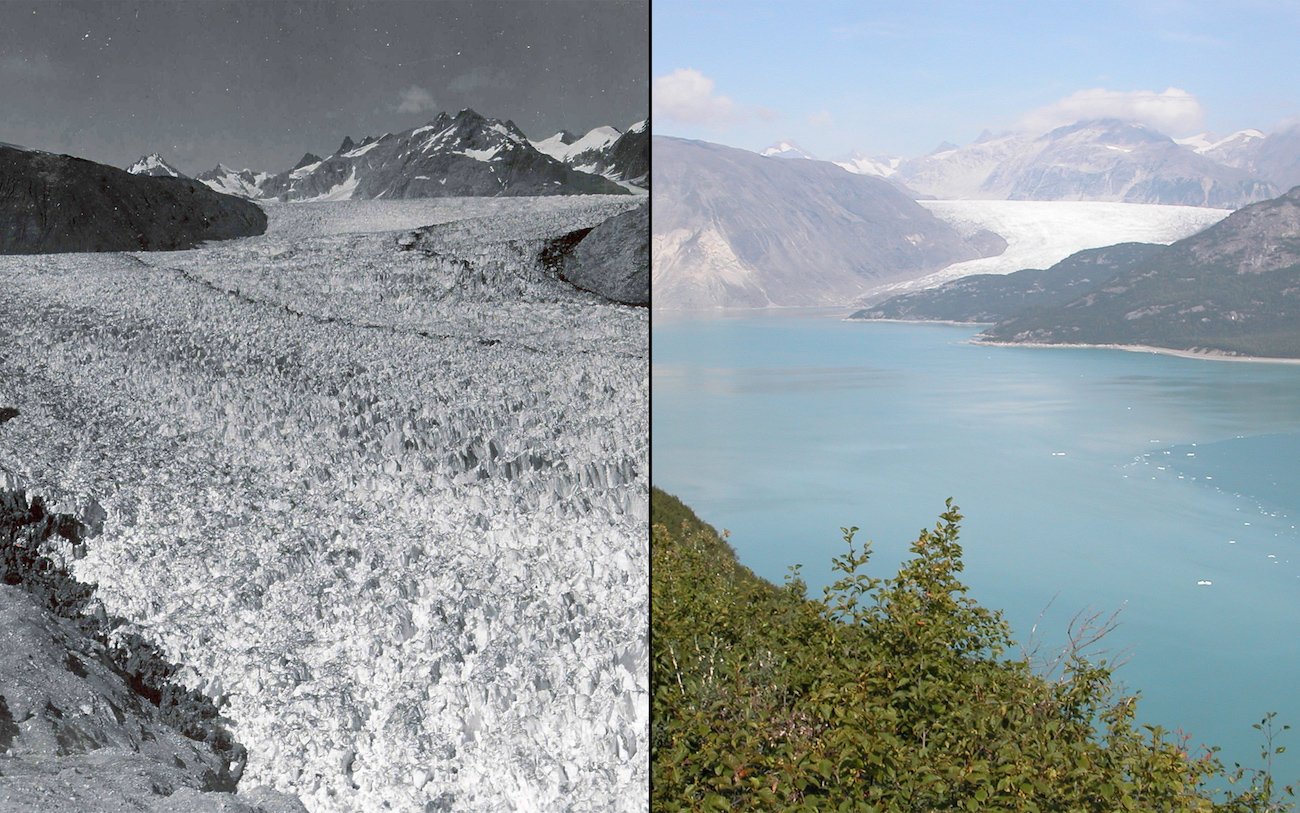
_________________________________________________________________

_________________________________________________________________
"Online climate data benefits producers"
"A group from the USDA Agricultural Research Station (ARS) has introduced a web-based application to help. It allows users to access important historical information about the past climate in their area. This could allow them to better plan for the current year. "We wanted to make an application that addresses some of the most basic questions that producers tend to ask about the current year's weather," explains Steven Mauget of ARS. "How does this year's rainfall or growing degree days compare with recent years? Are soil conditions warm enough to plant? When does first freeze usually occur in my area?" The data in the application comes from mesonet weather stations . A mesonet is a network of weather stations placed at a certain distance from each other—usually about 20 miles apart. These closely-spaced stations shed light on local weather features associated with thunderstorms and gust fronts."
(This mesonet site in Throckmorton County, halfway between Wichita Falls and Abilene, Texas, automatically monitors the weather in the area. Credit: Wes Burgett, Texas Tech University National Wind Institute.)
___________________________________________________________________________
"How to teach kids about climate"
"No politics, no bashing. Skeptical sources like blogs, op-eds, letters to the editor, etc., often include strident criticism of the opposition. There is no place for this in the classroom, especially not in science classes. This is not the place to analyze the reasons for alarmism or the behavior of alarmists."
"Focus on one idea. Many climate change writings have a shotgun blast aspect, offering a broad array of arguments over several distinct topics. For classroom use it is very important to take a single idea and briefly explain it, allowing ample time for discussion. In particular, one should not use any terminology that has not already been taught, except for the terminology being taught. Using terms the students do not know (such as “IPCC” or “anomaly”) will immediately distract the class. These new terms will become the subject, rather than the intended idea."
(Credit: CFact.org)

Thanks for checking in and don't forget to follow me on Twitter @TNelsonWX

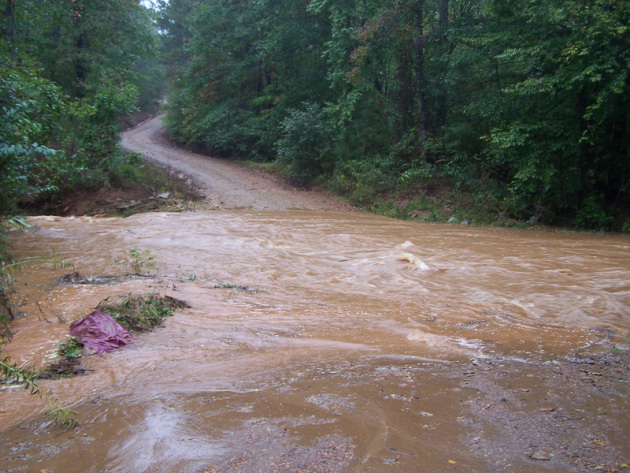
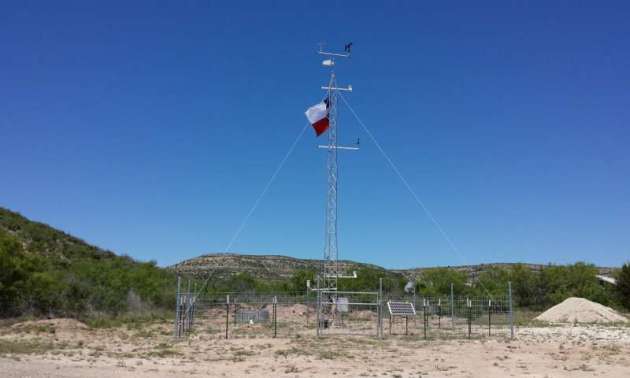
No comments:
Post a Comment